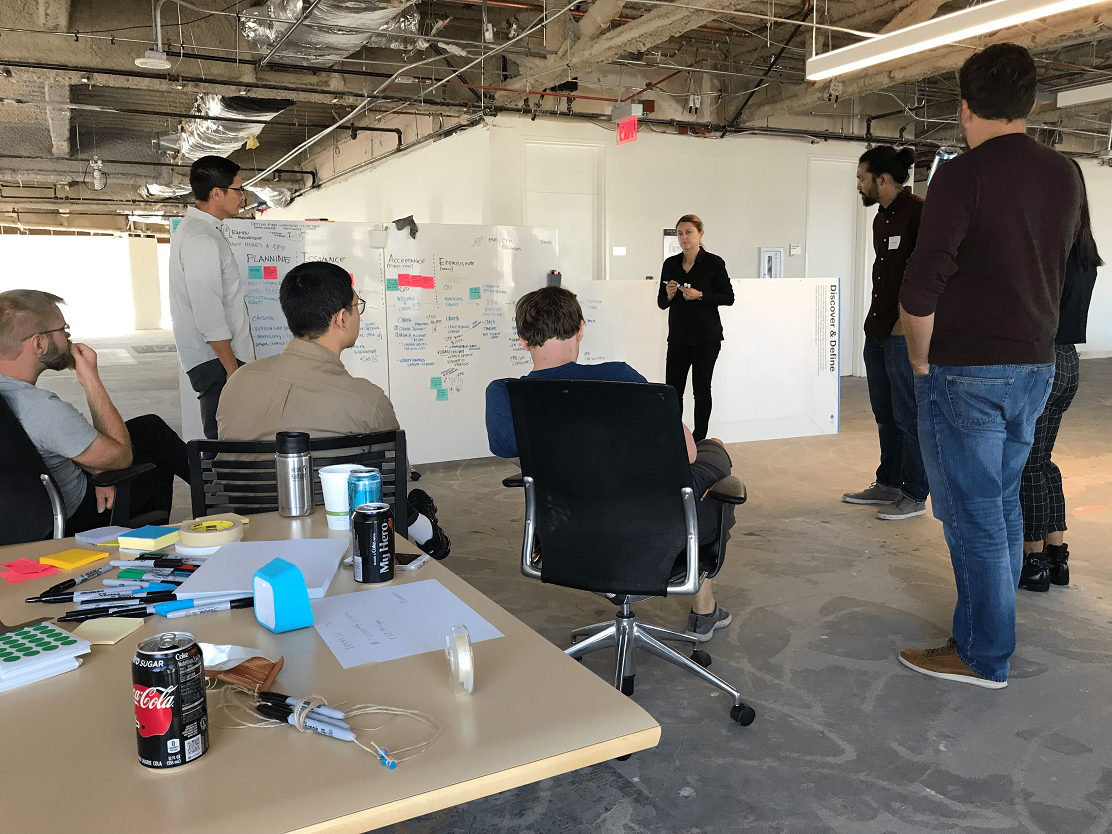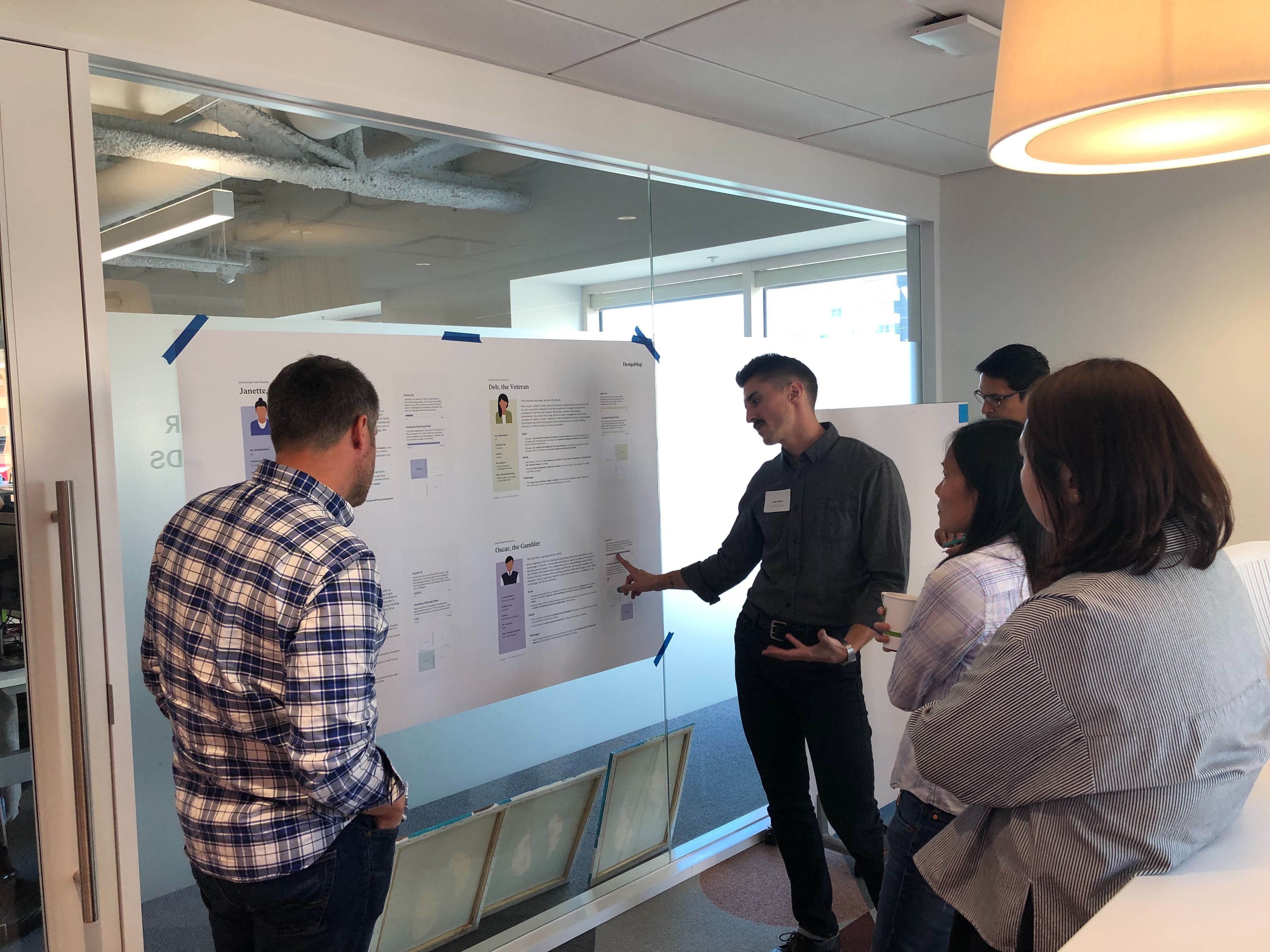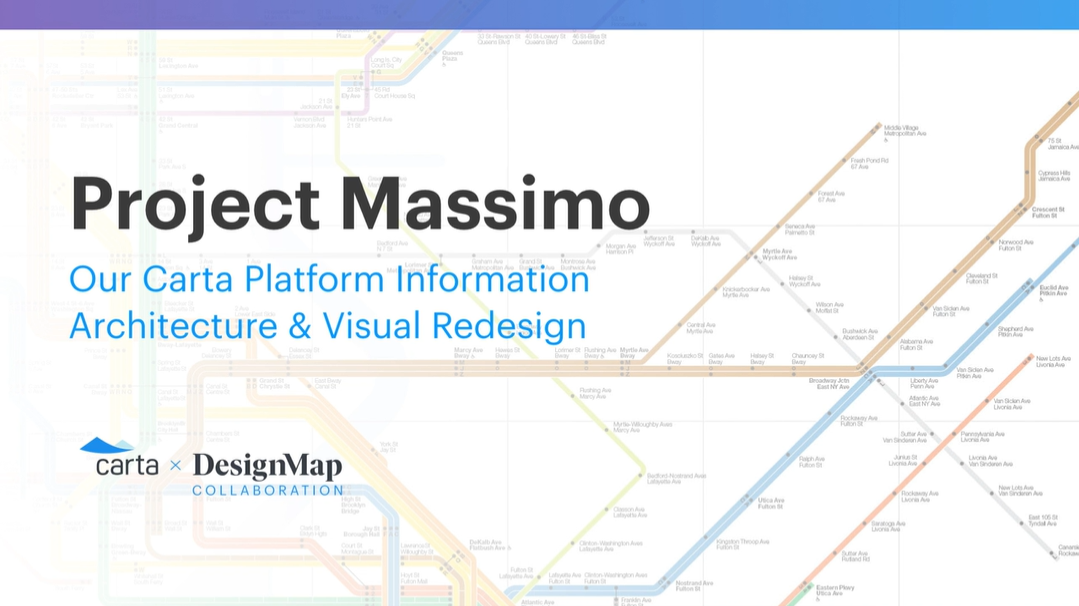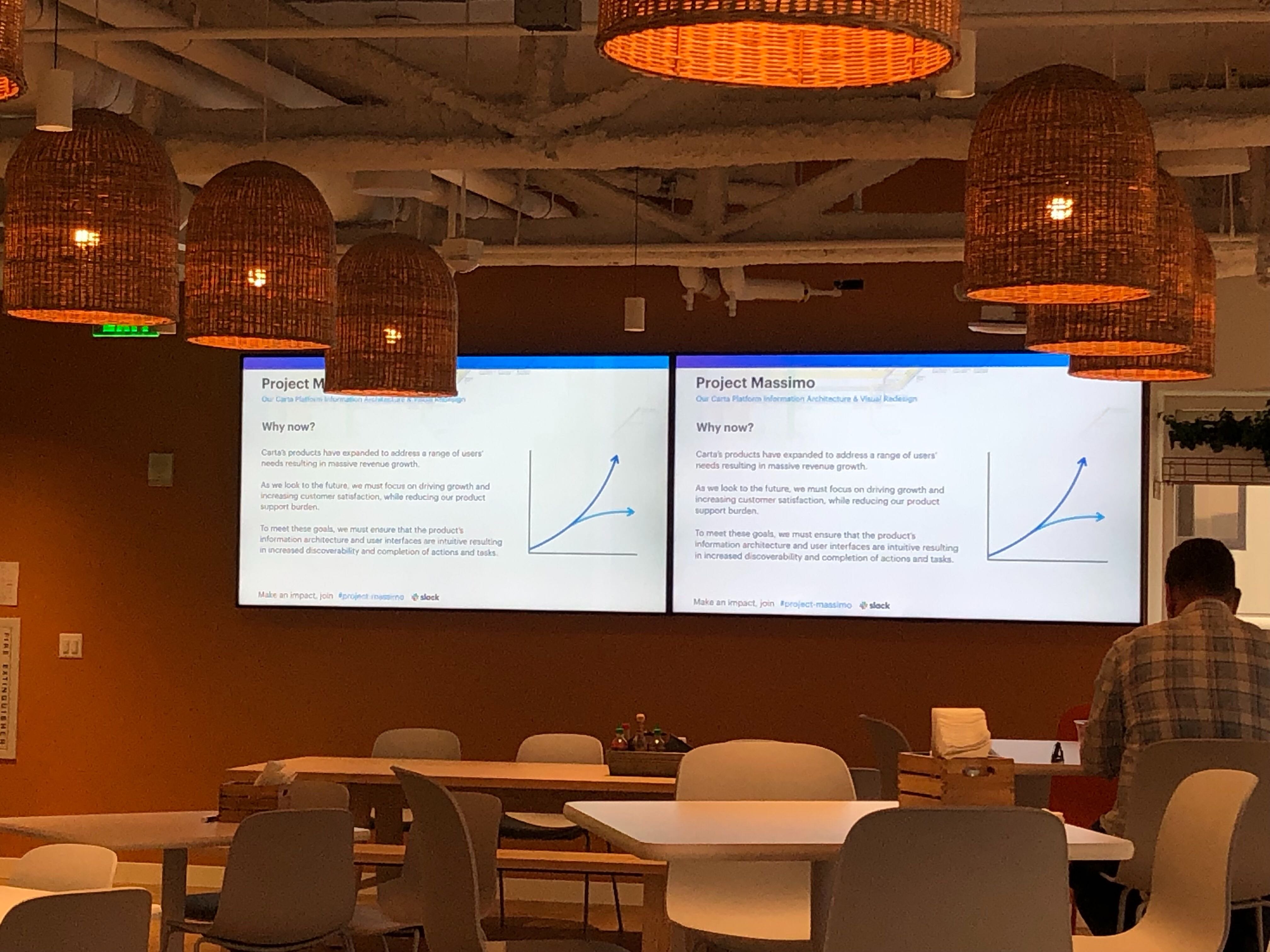We’d just started as Carta’s UX consultancy, and the team was ecstatic.
Everyone in the valley was talking about them. They’d just raised a $300M Series E from Andreeson Horowitz and things were about to get real.
$1.7B valuation. $447.8M raised in total. Over 100% year-over-year lift in ARR. And now, they were about to take it to a whole new level.
They’d just started working on CartaX—a stock market for private companies. This revolutionary new business line promised to change the way capital markets worked, granting everyday employees access to opportunities that’d previously only been available to the wealthy few.
Carta’s team was 100% rallied behind the vision, but they knew pulling it off wouldn’t be easy.
Over 3 years of extremely fast growth, Carta’s platform had taken on an extraordinary amount of design debt. Understaffed and under-resourced, Carta’s design team struggled to prioritize the user experience as more products and features were added to an increasingly complex platform.
Michael Lenahan, Carta’s newly-hired VP of UX, knew this was a problem. NPS scores were low, and users were constantly complaining of difficulty navigating and using the platform. As the daily active users exploded, so too did findability and usability-related support tickets, overwhelming an already stressed support team. If Carta was going to bring their vision to life, Michael knew they’d need to deliver a 10-star user experience.
That’s when he brought us in.
Like many in Silicon Valley, we’d been watching Carta’s rise from afar, so we were beyond excited. We dove headfirst into discovery—stakeholder interviews, product audits, user research, and more.
After several weeks of interviews, lightbulbs, and a lot of espresso, the “aha!” insights finally started to take shape. We were all good and excited and ready to jump into ideation, but there was one big obstacle standing in our way...
Why Organizational Silos Kill Your Ability to Innovate
When your startup's growing by nearly $20M in ARR a year, things get messy.
Product teams get sucked into the tornado. Month-after-month, they scramble to ship features and hit short-term OKRs. They get caught up in a whirlwind of new hires and excitement and an ever-more ambitious roadmap.
It’s truly exciting, but that kind of growth has downsides—not the least of which is that product teams often end up siloed with little communication or collaboration between them. Sometimes, there’s even a little enmity.
With Carta, they’d been growing so fast that UX design thinking had never been integrated into the product development process. They used an old-school waterfall approach where product managers came up with a solution, then designers went straight to wireframes and screens, which they then passed to engineering for buildout. There was very little cross-functional collaboration, and user needs weren’t a central part of the process.
The product teams also never talked to each other. Cap Tables, Onboarding, Financial Products—there was very little collaboration between these teams, and it showed. The platform’s information architecture correlated almost perfectly with their org chart, which may have made sense internally but made little sense to users. And further, several of the product teams had actually built duplicate functionality that solved the exact same user problem with slightly different UIs.
Perhaps the most striking issue though was that we picked up on a real feeling of tension between the teams. People were on edge. It was difficult to get them to sit down and open up. The product teams had not been incentivized to work together, and there seemed to be an almost competitive dynamic between them.
All of these are common problems that result from hypergrowth and are completely understandable, but that doesn’t make a difference to the user.
We knew that if Carta was going to build a 10-star user experience, they’d need to address these issues. They’d need to go beyond visionary ideas and inspiring prototypes.
What Carta needed was a change in culture.
3 Ways We Used UX Workshops to Change Carta’s Culture
We’d seen it before. Through 3 years of hypergrowth, Carta’s UX design got pushed to the wayside in favor of other investments needed to hit short-term milestones. But with an extremely ambitious vision to achieve, coupled with an ever-increasing volume of user complaints, Carta’s leadership knew it was time to break down silos and up-level their product design function.
UX workshops were the perfect tool to do this.
1. We Broke Down the Silos
Look at all the most innovative companies and one of the first things you’ll notice is this: they’re really good at cross-functional collaboration.
Building inspired products today requires everyone to be working in lock-step throughout the entire product lifecycle. That means no more waterfall. Product managers, engineers, and designers need to collaborate from strategy to concepting to buildout and beyond. Failing to do this stymies innovation and nearly always results in a product with usability issues.
With Carta, we wanted to mix it up. We decided that for all our workshops we’d include a mix of product managers, engineers, and designers. Further, everyone would attend sessions with team members from different product teams.

Doing this was important, as we not only wanted to change the dynamic between product teams, but we also wanted them to recognize commonalities in the problems they were solving, so they wouldn’t need to reinvent the wheel every time they were faced with a user need or challenge.
With the workshop participants divided into diverse groups, it was time for the real magic to start happening.
2. We Put the User Experience at the Center
Several of Carta’s product or feature teams actually served the same user—but they didn’t collaborate. Changing this would be the most powerful way to break down silos, so we made it a priority to do just that.
We created a series of UX workshops that each focused on one or two of Carta’s key personas. We started each of these workshops by aligning attendees around the persona in question. We shared information we’d learned about their challenges, their needs or “jobs-to-be-done”, and their current frustrations with the platform’s UX.

We then took a deep dive into a common scenario this persona would face while using the platform. Storytelling was the name of the game here. We wanted to take the persona insights we’d shared on the previous slide and build empathy by fleshing out the use case.
With user needs and pain points now at the center of the attendees’ attentions, we’d then move to an interactive brainstorm.
3. We Fostered a Spirit of Collaboration
If you want to build inspired, user-centric products, collaboration needs to be ingrained in your culture. It needs to be part of your DNA.
During our UX research and discovery phase, we’d picked up on a real sense of tension between the product teams. We knew this was an obstacle to collaboration, so we made it a priority to change the energy and get them working together.
Once they’d built empathy with the user personas, we engaged in a series of ideation workshop activities designed to facilitate collaboration.
First, we had workshop participants spend 8 minutes writing down or sketching as many ideas as they could think of. No idea was a bad idea; the goal was to get everyone into a psychologically-safe, free-flowing headspace together.
Next, we engaged in a workshop activity called “Crazy 8’s”. We had workshop participants pick one of their ideas and then come up with 8 different ways the idea could be done, sketching things like user flows, UI elements, or whatever.
Once done with that, we’d have them pick one of their 8 implementations and expand on it with more detail. After 8 minutes, we’d ask participants to draw their concepts on a whiteboard or a post-it note in front of the room for everyone to see. With a DesignMap director acting as workshop facilitator, we’d go around the room and let everyone give feedback on the ideas.
Finally, everyone would vote on their 3 favorites. By the end of each workshop, we’d have a strong consensus around which ideas showed the highest potential and were worth exploring.
Our UX Workshops Gave UX Design a Status Boost, Too

Fostering collaboration and elevating the user experience was great, but it wasn’t enough. One of the biggest challenges design orgs in high-growth companies run into is gaining the visibility and prestige they need to get their seat at the table.
With Carta, many non-design team members admitted to only having a basic understanding of what UX design’s role was. We wanted to change that. We wanted to build a wider sense of excitement and enthusiasm for design.
So at the start of our UX design workshop initiative (named Project Massimo after the design consultant responsible for the NYC subway’s design system), we posted a series of foam core boards throughout the office to raise awareness and get Carta stakeholders excited.
We then created promotional videos that’d play on TVs in Carta’s lunch room.

Finally, we created a dedicated Slack channel open to everyone. We used it frequently throughout our workshops, and by the end of Project Massimo it had hundreds of employees from all across the company participating.

How UX Design Workshops Transformed a $1.7B Company’s Culture
“DesignMap’s work set the standard for how we need to think differently in order to achieve our goals.”
-Michael Lenahan, VP of User Experience, Carta
Project Massimo was a tremendous success. For weeks after the workshops, we had Carta team members telling us how helpful—even how fun—the workshops had been. They said the workshops completely changed the way Carta’s product teams thought about the platform. With the help of DesignMap facilitators, workshop participants ideated and developed three crucial north stars that would come to define their platform for years to come.
Perhaps most rewarding of all, people seemed to be genuinely excited by the changes Project Massimo brought about. Product teams were collaborating more than before, and there was a greater sense of community and cohesion on top of Carta’s already-strong company culture.
Since our work together, Carta has continued their meteoric success, recently raising a $500M Series G at a $7.4 billion dollar valuation. These folks are the real deal, and we’re tremendously excited to see where they go from here.
So with that, I’ll leave you with just one key point:
If organizational silos are stifling your innovation, give UX workshops a shot. They worked great for Carta, and I know they’ll work great for you as well.
On behalf of the whole crew here at DesignMap, best of luck on your journey. We’re rooting for you!
If you enjoyed this story, or you’d like us to help with a UX workshop program of your own, give us a shout. We’d love to hear from you!


